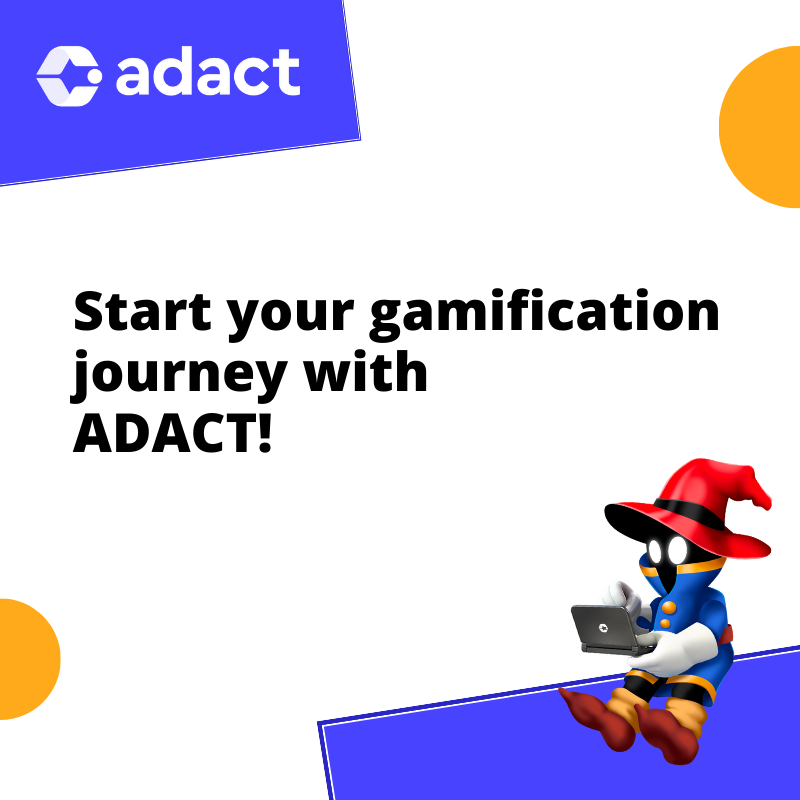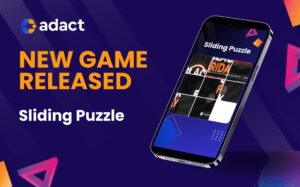Gamification is not only pure entertainment but can be implemented into the marketing funnel to bring measurable results. It is a process of including game mechanics into nongame surroundings like an online community, website, learning management system or business intranet to raise involvement. The goal of gamification is to connect with customers, partners and employees to motivate, collaborate, interact and share the brand’s products or services.
How does gamification work?
Gamification works by providing spectators with practical feedback and directives through game dynamics and game mechanics added to online platforms that direct to the accomplishments of business objectives and goals.
All businesses require creative advertising strategies to promote their brand and engage maximum customer attention. Gamification helps people in reaching customers online and through connected mobile devices.
Some of the popular gaming techniques such as competition, scoring systems, incentives and ranking lists are used to draw clients with the overarching aim of building brand reliability, making connections and giving clients a reason to keep returning to the brand and acquire services and products. The main objective of gamifying as a marketing tool is to increase sales and boost profit. These customer-oriented games help people in achieving their objectives.
5 steps to start using a gamified marketing funnel
Games in marketing can help brands improve their digital presence and increase customer engagement and interaction. They also help gather data that would otherwise be difficult to acquire.
In this section, you’ll learn about the five important steps to start using a gamified marketing funnel.
Step 1: What are your marketing goals and KPIs?
Success comes to those who are focused on their goals and make use of all the right strategies to achieve them. Everything around us changes from time to time. One must understand all the latest technologies and ways of making their brand stand out in the market. Staying ahead of others in the business world is not an easy job. It requires a lot of smart work and the selection of the right marketing strategy.

At the end of the day, it’s all about coping with a different set of skills, ideas and personalities, making sure that everything can be done on time. The CEOs must have a vision of the future. They must analyze paramount metrics to improve their business and generate expectations and lead with skilled intelligence.
Some of the most important performance metrics for a gamification marketing campaign:
- Number of leads
- Organic traffic
- Utilization rate
- Profit margins
Have a look at each of these points in detail:
Number of leads
To find new customers, the company needs to comprise an explicit number of prospective leads. However, keep in mind that the advergame is not about all leads but only concerns qualified leads.
These qualified leads can help business leaders predict future customer relationships and the number of upcoming contracts. The team must be aware of how to systematize and classify the leads they get.
Once the business leaders manage to make sure their team is completely prepared to comprehend and scrutinize each specific lead, they can move on to the next phase, which is focusing on the platforms that are providing them with the highest number of leads.
Organic traffic
Generating traffic means getting maximum customer attention toward a business or brand. This will help in increasing sales. Make sure the advergame you develop for your business contains all the important measures to increase organic traffic.
This approach will help in increasing brand awareness. It allows companies or brands to get clients just by a website that manages to stay on top of the search engine. Business owners must understand the power of their organic traffic, the heading and keywords they have used on their homepage and other pages. Similarly, make sure that the SEO strategy is finely attuned to get as many organic customers as possible.
One can easily monitor their website’s page organic traffic using Google Analytics. All you need to do is to sign up for Google Analytics, click on the main “Reporting” tab and select “Acquisition” and then “Overview”.
Utilization rate
It refers to the amount of time your employees are spending working. However, this is one of the essential KPIs for companies to master as well as one of the Key Performance Indicators for employees.
Business owners need to go through this step. This will help them in making sure that their establishment is sharp and quick. It also provides them an opportunity to fine-tune and correct any breakdowns associated with time optimization.
Profit margins
It is one of the most relevant Key Performance Indicators for business owners to know about. At the end of the day, industry leaders either cope with building a super lucrative, industry-shaping agency or they have failed. Companies or brands must use the right advertising strategy that provides them with great profit margins.
Step 2: Figure out a game idea
Advergames are a non-threatening method to increase morale and brand sales. It is a great way to tell people about your products and services and creatively engage them. Always consider developing a game that contains a clear message about your business or brand. Do not forget to highlight the key message for your business or brand and the particular campaign you are putting together.

Make sure that the advergame which you design for your business or brand conveys your brand’s message clearly and concisely. This will help your audience know exactly what you are selling them at first glance. Similarly, try to match the color scheme with your company’s or brand’s logo. It is a great way of catching maximum user attention. This will also help people remember your brand through its advergame.
Try to be creative and imaginative while designing an advergame for your brand. People love to play games that are interesting and different from others. Identify the age group of your audience and design something that perfectly matches their interest and can help you increase your brand name.
Step 3: Build a game
Now the third step is to build your branded game. One can use their company’s internal software developers, but you need to keep in mind that they will need to start learning game creation from scratch. Also, you are required to make decisions regarding gamification techniques and rules – like game length and difficulty. Having proper knowledge in this area can help you in developing the game correctly.
In case you do not have an expert in your team who can help you in developing an advergame for your company then the best approach is to seek professional help. For this, you need to buy the service from a reputable software development agency.

All this will usually cost 15,000 USD and would usually take 3+ months of work. There is also a risk that the agency wants to create a fancier game that you need to sell at a higher price. Sometimes creative people from software agencies tend to get too ambitious and want to make cool video games while actually, it’s not good for gamification marketing.
You need to communicate that you want the game to be:
- Mobile-first (90% of the players will be mobile)
- The game should work with different internet connections and various devices
- The game should be very simple to understand for people who are just browsing and not specifically interested in playing games. That means that the game should have one button to press and needs no manual
In Adact we have games that are proven to work – simple enough and need no manual. Adact is a drag’n’drop based software that is equipped with prebuilt templates and games for you to redesign. You can literally create your own gamification marketing campaign in 30 minutes without writing a single line of code.
Also, all games are mobile-friendly and include all the useful features like leaderboards and an automated prize raffling system. Something that also takes extra development when creating a game manually, is analytics.
Our gamification software has real-time analytics that tracks all the necessary metrics, including where the traffic is coming in and how many players have pressed your directing link buttons.
Step 4: Promotion
After you develop a game for your brand it’s time to tell people about it. Use all proper measures to constantly promote your advergame across your social media platforms. This will help you maintain a steady stream of promotions throughout the campaign.
One can also challenge their followers to beat their staff scores. This will help in creating a sense of competition among people. Also, try to be fully active on such platforms and respond to users’ comments and questions in less time and keep them engaged. Work on building up a strong relationship with the people coming to your social media page, organically or through tags from friends. Once you instigate your gamification crusade, you must be careful of where your target spectators will be and the kind of content they will counter to.
Creating an advergame is a good and fine idea for getting maximum customer attention and making a brand popular among people. But if you do not select a suitable promotion strategy to advertise or promote your game campaign to draw and confine your viewers, you could be short-changing yourself.
Step 5: Analysis
Some common metrics you need to observe while analyzing a gamification campaign are:
- Social media reach with the game and ad impressions
- Unique game players
- The bounce rate of the game page
- Completion rate of the game
- Percentage of people who clicked on the links
Let’s discuss each of the above-mentioned metrics in detail:
Social media reach with the game and ad impressions
Social media reach is a media analytics metric. It refers to the number of users who observe a particular content on a social media platform. There are different ways of analyzing, tracking and reporting traffic on social media platforms. These platforms allow people an option to make their content public and tell people about it.
Tell people about your game and brand through social media. Use related hashtags, keywords and creative tag lines to catch the attention of people. The use of social media platforms serves as the main source of communication between brands and their audiences. It also helps companies to exploit diagnostic information, such as the reach of their posts to understand the interactions between the users and their content.
Unique game players
People are always attracted to things that are unique and different from others. The same is the case with advergames. If you want to stay ahead of others and gain maximum user attention then you need to design your game in such a way that it includes interesting themes and unique game players so that it can engage the audience and people love to spend their free time playing your game.
Bounce rate of the game page
Try to get a reasonable bounce rate for your game page. According to the latest study, the reasonable bounce rate is somewhere between 30% and 55%. It plays an important role in generating traffic on your page. Use all the measures to keep this up to mark for maximum output.
Completion rate of the game
The advergame that you design for your business or brand must contain a higher completion rate. The higher completion rate refers to higher user engagement. It means the users are more likely to come back and consume more content. Design your game in such a way that it achieves a higher completion rate.
Percentage of people who clicked on the links
Keep an account of people who clicked on the next links that are present on the first page. The higher percentage in this area will show that the user found the game interesting and thoroughly visited everything. It is a great way of creating brand awareness. Keep account of this percentage and update the page from time to time for better results.
Conclusion
Using all five of these steps, you will be able to create an excellent gamified marketing funnel and increase numbers in your marketing reports.

Book a Demo
In the meeting, we will take a look at ADACT, discuss different game ideas and how gamification can help reach your marketing goals.





